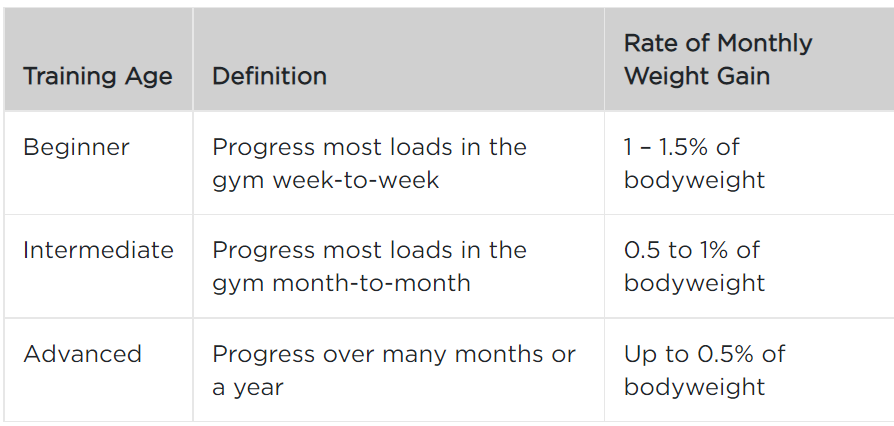Building Muscle Is More Than Just A Dirty Bulk

How can you build muscle efficiently? Many men struggle to achieve the coveted “cover model” physique.
You may have heard the phrase ‘eat large to get fat’ or ‘dirty mass’.
Science and common sense tell us this is not a good way to gain muscle in a healthy, methodical manner.
It doesn’t have to be difficult to build muscle. You don’t have to sacrifice your health or your sanity in order to get the results you want.
How to maximize your training and gain weight with tools and tips.
Ultimate Performance Client Ethan gained 6kg in lean body mass within 45 weeks.
The origins of the “dirty bulk” myth
The dirty bulk has its origins in the bodybuilding circles from the 1970s and 1980s. They popularised the idea that calorie intake is crucial to muscle growth.
The high calorie needs of trainees made it necessary to consume a variety of calorie-dense and highly palatable foods. It was nearly impossible to meet these goals by consuming only unprocessed foods that were rich in nutrients.
In these spheres, the traditional “bulk-cut” methodology also heavily relies on anabolic steroids.
Bodybuilding is an elite sport, and to compete at the highest levels, athletes often use large amounts of performance-enhancing drugs (PEDs).
You will gain muscle even if you consume poor quality food. When it comes to cutting hard after a “bulk”, PEDs allow you to do so while minimising the loss of muscle.
Is ‘bulking’ necessary?
Bulking is the process of increasing calories beyond your maintenance requirements in order to gain muscle. The 3,500-calorie principle is used to support the concept. If a 500 calorie deficit leads to one pound per week of fat loss, then a 500 calorie surplus will lead to one pound in muscle gain.
The science of muscle gain is much more nuanced. If you were to dissect one pound of hydrated muscle (0.5kg), you would find that only a third is protein. The rest is minerals and water. A pound of muscle contains only 800 kCal, while 1 lb of body fat has 500 kCal [2]. It is evident that maintaining and synthesising muscle mass requires a higher metabolic output than body fat.
Gaining weight is almost always accompanied by a small amount of fat, even if you’re not overweight or new to resistance-training. You may also need to consume more calories than you thought, as building and maintaining muscles requires a higher caloric intake. The more you bulk up, the higher your calorie requirements will be. This increases the risk of gaining significant weight. A ‘dirty’ bulk involves eating a lot of processed foods that are high in calories, without much thought to the health implications.
Science does not support massive calorie surpluses
Research shows that consuming calories at or slightly above maintenance intake is sufficient for gaining muscle. In a 2013 study, resistance-trained sportsmen found that those who ate a small surplus gained the same amount and strength of the group that consumed 600 extra calories. However, they gained 20% more body fat.
The rate of muscle growth is affected by your “training age”: the length of time that you have been doing a sport such as resistance exercise. This term is used to describe your cumulative skill level over the course of weeks, months or even years. It reflects both your past training and your potential for improvement. This table shows what you can expect per month based on the age of your training [6]:

Dirty bulking has its downsides
Eating excessively to meet your energy needs has many negative effects.
1. Your ‘gains’will probably be lost
A large calorie surplus can lead to a lot of muscle gain, but also more body fat. The larger the surplus, then the more fat you will gain. The more fat you carry, the more you will need to diet aggressively during your subsequent cut. You may lose additional muscle.
2. Health warnings for dirty bulks are needed
A significant fat gain can also have adverse health effects such as reduced insulin sensitivity and decreased testosterone. Not to mention an increased risk of cardiovascular disease, high cholesterol, and high blood pressure.
3. Time, money, and energy are spent on buying, preparing, and eating food.
A dirty bulk is not practical for many people unless they are happy to carry a cooler bag around with 10 meals per day. A lot of food is expensive and takes time to prepare and consume.
4. Your mental performance can suffer if you improve your physical performance.
You may feel sluggish or tired throughout the day, even though you’ve consumed more calories. There are other ways to get that promotion without sacrificing mental sharpness or’real energy’ levels.
5. You will likely spend a great deal of time feeling sick
Excessive consumption of even the most delicious foods can make them unappetising. It can be difficult to consume large amounts of high-quality calories, depending on your body composition at the start and how active you are. Low-quality food increases your risk of negative health outcomes.

At Ultimate Performance, we advise our clients to first get lean before beginning a phase of building muscle. Here’s how Kamran gained muscle in just 26 weeks.
What’s the best way to maximise your profits?
These five priorities will help you achieve a cover model physique.
1. Focus on fat loss prior to muscle gain
Fat loss will boost your beach credentials far more than an unhealthy bulk that makes you feel sluggish, inflamed and self-conscious. Improving your body composition will enhance your muscle definition and give you the illusion that you are bigger. Dieting to 8-10% bodyfat is a good starting point for most men. Even if you gain fat, your condition will still be good.
2. Train smarter
How many men do you know who train the ‘bro-splits’ or follow a program created by Instagram influencers? This approach does not allow for consistent training volume maximisation and includes fixed ideals about the ‘best exercises’ that do not fit your unique body. Smart program design and execution are essential, regardless of whether your goal is to lose fat or gain muscle.
3. Train harder but more consistently
The intensity of your training is a measurement of how hard you work. You could be missing out if you don’t track it. Research shows that the last five repetitions, before you reach true muscular failure, are the ones which trigger the greatest growth.
The “reps in reserves” system is designed to account for fluctuations in energy and strength. In general, you should aim to complete two to three repetitions before reaching muscular failure during your first sets.
Push to failure on the final set of exercises that are low-risk and require stability, such as a chest curl or biceps fly. Stopping short of failure in high-risk technical exercises such as deadlifts or squats can prevent injury, performance declines and muscle growth impairment [9].

4. Maximise your nutrient intake to give your body the necessary building blocks for growth
If you put crap in, you get crap out. You can’t expect your body to function at its peak if you aren’t meeting its nutritional requirements. Although there are more options for dietary flexibility during a phase of muscle gain, it is still important to get the majority your calories from high-quality, single-ingredient sources. You will not only remain healthy metabolically, but you will also be primed to gain lean muscle instead of a lot of body fat. It’s often a matter of trial-and-error when it comes to setting calorie goals. Calculate your maintenance intake with an online calculator, and then adjust it based on your progress.
5. Sleep and stress management
Sleep affects muscle protein synthesis. This is the key to adaptive responses during exercise. Even a two-hour sleep loss can double muscle loss. A number of studies have also linked chronic stress with low testosterone, poor gym performance and muscle loss. [11],[12],[13]. If you want to maximise your gym results, improve your sleep hygiene, and manage stress.

How to build muscle the right Way
Stewart, 51, says that when he first arrived at Ultimate Performance he was “skinny” fat and had a poor diet. He would smoke 30 cigarettes or more a day, and drink wine regularly.
Stewart began by going through a phase of 15 weeks of weight loss. He lost around 5-6kg and focused on eating a diet rich in nutrients.
He was in a good position because he had a lean body and was insulin sensitive, which meant that he could build muscle quickly.
It was much easier to increase his calories incrementally with a low level of body fat, while still being able monitor his levels.
Stewart followed his training for 20 months and adhered to the principles of ‘eating from nature’ and sensible portion control.
He gained muscle mass and strength steadily and methodically during this time. He’s now in his 50s, lean and well-muscled without compromising his health by a ‘dirty’ bulk.
Learn more about the seven tips that Stewart used to achieve his long-term muscular transformation.
You can read more about it here:
A dirty bulk is not necessary unless you plan to compete on the Mr Olympia stage in the near future. A moderate surplus or eating at your maintenance caloric intake is enough to promote muscle growth. Leaning up should be your first priority if muscle gain is what you’re after. When you’re ready to grow, you should prioritize high-quality food, intelligent programming design and execution, and effective recovery.
The Key Takeaways
- The term ‘dirty’ bulk refers to consuming a large amount of calories to increase muscle mass, usually through the consumption of highly processed and calorie-dense food.
- The majority of ‘bulking approaches’ assume that, if you need a 500 calorie deficit per day to lose one pound of body fat each week, then you also require a 500 calorie surplus in order to gain one pound muscle.
- The myth was popularised by bodybuilding circles in the 1970s and 1980s, which emphasized eating as much food as possible during growth phases.
- Dirty bulking can have serious consequences for the metabolic health of the average trainee.
- The muscle gained by a “dirty bulk” will disappear when you begin the hard diet required to reach a healthy body composition.
- Leaner is better for most male athletes and will help you achieve a more sculpted physique.
- When it comes to maximizing your gym gains, a smart program design and nutrition are much safer investments.

